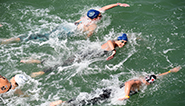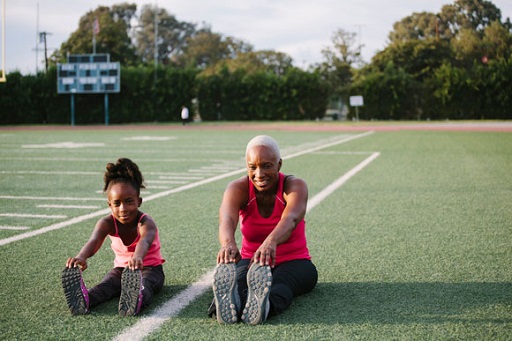6 Resilience in the early stages of the athletic development journey
If we consider Harrison’s (2020) article and apply it to early experiences on the athletic development journey, it could be argued that positive experiences in school sport and physical education (PE) are more likely to result from young people adopting a challenge mindset and having the ability to ‘buffer’ the potential negative effects of stressors that they might encounter.
Research to examine potential stressors experienced by young people in PE was conducted by Tudor, Sarkar and Spray (2019), to explain patterns of motivation and engagement in the subject. Stressors for the students were identified as:
- the social environment, including interactions between peers
- the physical and organisational environment, including the changing facilities
- the performance environment, including situations where physical appearance and physical competencies were exposed.
Having gained an understanding of the stressors experienced in PE, Tudor, Sarkar and Spray moved their focus to exploring the protective factors that alter the student response to the identified stressors associated with PE participation – investigating student resilience in the PE context. This resulted in a second article being published, which you will see being applied to a case study in Activity 7.
Activity 7 Examining resilience in PE
First, read this summary of the research by Tudor, Sarkar and Spray (2020):
Research summary
Tudor, K., Sarkar, M. and Spray, C.M. (2020) ‘Resilience in physical education: A qualitative exploration of protective factors’, European Physical Education Review, 26(1), pp. 284–302.
Aim: to explore protective factors that alter secondary school students’ responses to common stressors associated with PE participation.
Method: Interviews and focus groups (group interviews) were conducted with six teachers and 54 students. Transcripts were analysed using thematic analysis.
Findings: The study identified individual assets and environmental factors that may buffer the impact of stressors on positive adaptation.
- Individual assets identified as potential protective factors comprised of cognitive factors (e.g., perceived competence), personality trait (e.g., extraversion) and behavioural factors (e.g., approaching challenge).
- Environmental resources that influenced the impact of the stressors experienced comprised of peers (e.g., being with friends), teachers (e.g., reinforcing resilient behaviour) and parental factors (e.g., reinforcing the value of PE).
Conclusion: The study identified and explored unique protective factors that teachers may target to facilitate resilience in the PE context.
Secondly, read this short case study about Efia, and consider how the research findings were able to support her in her role.
Case study: Efia (PE teacher)
Efia is a newly qualified PE teacher and has just started a new position in a large secondary school. Like you, she was introduced to the topic of resilience in her studies and she is keen to continue to learn how she can integrate this knowledge and understanding into her practice. She has read the research article and is going to try to implement a number of the practitioner implications that are suggested by the researchers.
Specifically, Efia is going to ensure that she can cater for the needs of all of her students by using differentiation, manage the use of competition appropriately and consider techniques that can improve student engagement following a poor performance. She will try and encourage students to embrace challenge and offer a choice of activity where possible. Building strong relationships with students is a key buffer to stressors encountered, and Efia will focus on an equal relationship with all students, regardless of their levels of motivation and behaviour.
Finally, if you are a coach or work with children in a different setting reflect on how this might be applied to your own role. If this does not apply to you, think back to your own PE experiences and how the changes that Efia intends to make might have created a different environment for your PE experience.
Discussion
One of the key takeaway messages from the research examined in this activity, is that PE teachers – and therefore arguably coaches – can play a significant role in facilitating the development of resilience. This will be explored further in Session 2.

